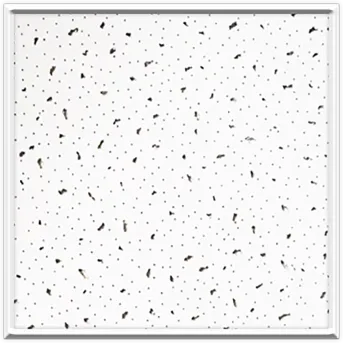- Afrikaans
- Albanian
- Amharic
- Arabic
- Armenian
- Azerbaijani
- Basque
- Belarusian
- Bengali
- Bosnian
- Bulgarian
- Catalan
- Cebuano
- Corsican
- Croatian
- Czech
- Danish
- Dutch
- English
- Esperanto
- Estonian
- French
- German
- Greek
- Hindi
- Indonesian
- irish
- Italian
- Japanese
- Korean
- Lao
- Malay
- Myanmar
- Norwegian
- Norwegian
- Polish
- Portuguese
- Romanian
- Russian
- Serbian
- Spanish
- Swedish
- Thai
- Turkish
- Ukrainian
- Uzbek
- Vietnamese
Aug . 06, 2024 02:48 Back to list
Exploring Innovative Designs for Lightweight Plastic Drop Ceiling Grid Systems in Modern Interiors
The Rising Popularity of Plastic Drop Ceiling Grids
In recent years, building materials have evolved significantly, and one of the noteworthy innovations is the plastic drop ceiling grid. Traditionally, drop ceilings have been constructed using metal or wood grids, but the introduction of plastic grids has transformed this segment of construction and design. Plastic drop ceiling grids are gaining momentum due to various advantages they provide, making them a viable choice for both residential and commercial spaces.
One of the primary benefits of plastic drop ceiling grids is their lightweight nature. Compared to metal grids, which can be cumbersome and difficult to handle during installation, plastic grids are much easier to manipulate. This feature not only speeds up the installation process but also reduces labor costs and the potential risk of injury during handling. Consequently, builders and contractors are increasingly turning to plastic grids for their projects.
Durability is another significant advantage of plastic drop ceiling grids. Unlike metal, which can rust and corrode over time, or wood, which may warp or suffer from insect damage, plastic grids are resistant to moisture, mold, and mildew. This makes them particularly suitable for environments that are prone to humidity, such as basements, kitchens, and bathrooms. The resilience of plastic grids ensures the longevity of the ceiling installation, thereby providing excellent value for money.
Aesthetic appeal is also a critical factor in the popularity of plastic drop ceiling grids. Available in a variety of colors, patterns, and styles, plastic grids can enhance the overall look of a room. Unlike traditional grid systems, which often come in standard metallic tones, plastic options allow for greater creativity and personalization. This flexibility makes plastic drop ceiling grids a preferred choice for interior designers looking to create unique spaces that reflect individual tastes and company branding in commercial settings.
plastic drop ceiling grid

Moreover, plastic drop ceiling grids are environmentally friendly. With a growing emphasis on sustainability in construction, many manufacturers now produce plastic grids from recycled materials. This not only reduces waste but also lowers the carbon footprint associated with manufacturing new materials. As more consumers and businesses prioritize eco-friendly options, plastic drop ceiling grids have become an appealing choice that aligns with sustainable practices.
Installation and maintenance of plastic drop ceiling grids are also user-friendly. The grids can be easily cut to fit various room dimensions, and the lightweight nature of the plastic makes it simple to install the ceiling tiles without requiring specialized tools. Additionally, maintaining a plastic drop ceiling grid is hassle-free. Most plastic materials can be cleaned with mild detergents and do not require special treatments to preserve their appearance.
In the context of technological advancements, some manufacturers are integrating LED lighting into plastic drop ceiling systems, creating innovative ceiling solutions that cater to modern lighting needs while adding to the aesthetic appeal of spaces. This combination of functionality and design is particularly attractive to businesses looking to enhance their work environments.
In conclusion, plastic drop ceiling grids are revolutionizing the way ceilings are designed and implemented in various settings. Their lightweight, durable, and aesthetically versatile characteristics make them an attractive alternative to traditional grid systems. As sustainability continues to take precedent in building practices, plastic grids provide an environmentally friendly and practical solution. The unique blend of form and functionality makes plastic drop ceiling grids a popular choice that is likely to continue growing in demand within the construction and design industries.
-
Transform Interiors with PVC Gypsum Ceiling: A Stylish, Durable, and Moisture-Resistant SolutionNewsMay.19,2025
-
The Smart Interior Upgrade: Discover the Durability and Versatility of Gypsum Ceiling Access Panel SolutionsNewsMay.19,2025
-
The Smart Choice for Interior Design: Discover the Value of PVC Gypsum Ceiling SolutionsNewsMay.19,2025
-
Mineral Fiber Ceiling Tiles: The Smart Blend of Performance and AestheticsNewsMay.19,2025
-
Mineral Fiber Ceiling Tiles: The Superior Choice Over Gypsum for Sound and Fire SafetyNewsMay.19,2025
-
Mineral Fiber Ceiling Tiles: Eco-Friendly Strength and Style for Every CeilingNewsMay.19,2025







